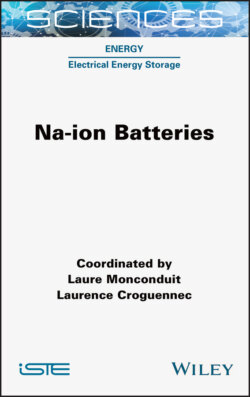Читать книгу Na-ion Batteries - Laure Monconduit - Страница 32
1.3.2.2. O3-Na[Fe,Co,M]O2
ОглавлениеGood effect of 3d metal coexistence is obtained for a cobalt containing material of NaFe1/2Co1/2O2. O3-NaFe1/2Co1/2O2 delivers a large reversible capacity of 160 mAh g−1 based on Co3+/4+ redox in a low-voltage region and Fe3+/4+ in a high-voltage region in the voltage range of 2.5–4.0 V (Figure 1.12) (Yoshida et al. 2013). Furthermore, relatively good cycling stability of the reversible capacities and excellent rate-capability are obtained. O3-NaFe1/2Co1/2O2 undergoes reversible 0.7 Na extraction from the structure, implying that iron migration is suppressed by coexistence with cobalt compared to O3-type Fe, Fe-Ti, and Fe-Ni systems, but further Na extraction leads to large irreversible capacity and capacity degradation (Kubota et al. 2016). Further improvement and compositional modification have been conducted for O3-NaFe1/2Co1/2O2. For examples, O3-Na[Fe1/3Co1/3Ni1/3]O2 (Vassilaras et al. 2014) and O3-Na[Fe1/4Co1/4Ni1/4Mn1/4]O2 (Li et al. 2014) deliver reversible capacities of ca. 165 and 180 mAh g−1, respectively, which are larger than 160 mAh g−1 for O3-NaFe1/2Co1/2O2. Although Ti-substitution reduces the reversible capacity, O3-Na[Fe1/4Co1/4Ni1/4Mn1/8Ti1/8]O2 delivers a reversible capacity of ca. 130 mAh g−1 in the voltage range of 2.0–4.1 V and exhibits excellent cycle stability and rate-capability (Yue et al. 2015). Optimization of the composition including the iron and cobalt contents and particle morphology is expected to further enhance the electrode performances of Na[Fe,Co,M]O2.
